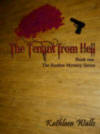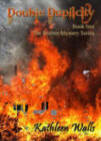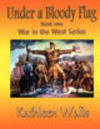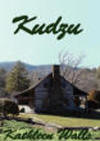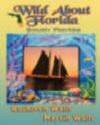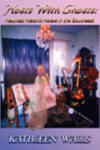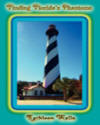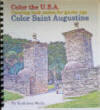Alachua County’s Magnificent
Museums
Story and photos
by Kathleen Walls
Alachua County, Florida has a museum for
every interest. As a college town, you expect this in
Gainesville, but there are other towns around the county worth
a visit. Here are some I have visited and enjoyed. I’ll start
with Gainesville. The first three museums are free.
Gainesville
Matherson History Museum was a pleasant surprise for a
small museum. Since I am currently writing a book on the
history of American music, the main hall exhibit, Return to
Forever: Gainesville’s Great Southern Music Hall, really got my
interest. I learned that between 1974 and 1978, Gainesville’s
top concert venue was the Great Southern Music Hall, located
inside the historic Florida Theatre. It hosted greats from many
genres including Jimmy Buffett, Ray Charles, Muddy Waters, Bob
Seger, Steve Martin, Ike and Tina Turner, the Count Basie
Orchestra, Cheech & Chong and rock and roll great, Bo Diddley
who lived in Alachua county many years and died here.
Pro tip: After visiting the
museum, I was inspired to visit
Bo Diddley Community Plaza
downtown and the famous Florida theater across the street from
it.
Dining tip: There are lots of
great restaurants around the plaza, including
Harry’s Seafood Bar & Grille,
housed in Gainesville’s historic 1987 Opera House.
The Harn
Museum of Art is a cultural treasure. The exhibits I liked
best were Florida Impressions and Posing Beauty in African
American Culture. Florida Impressions offers a look at old
Florida. There were about fifty paintings from coastlines and
waterways, to historic landmarks; many painted by famous
artists who visited Florida in the early to mid-20th century.
Some of my favorites here are painting of Cross Creek, home of
Marjorie Killins Rawlings, and scenes from the Mandarin section
of Jacksonville where Harriett Beecher Stowe had a summer home.
Posing
Beauty examines the intersections of art and beauty through
many mediums; photography, video, fashion, and advertising. It
includes 120 works of art from more than 45 artists and
photographers.
Florida Museum of
Natural History is one of the nation’s top five
natural history museums. It’s divided into several sections.
In
Florida Fossils: Evolution of Life and Land, you glimpse life
in the last 65 million years of Earth’s history. The South
Florida People & Environments exhibit walks you through Florida
when it was the land of the Calusa and later the Seminole and
Miccosukee people. I loved being able to play audio recordings
by Native Americans. My favorite was a song by Seminole James
Billie about telling a dead soul to move on.
Underwater Walk-Through lets you “be” a
small fish walking through an underwater estuary where the
creatures are twelve times life-sized. Discovery Zone is where
kids explore. There’s so much to see here, allow plenty of
time.
There is a temporary Spiders Alive exhibit
ending September 4, 2023. It’s a paid one but a deep dive into
the life cycle of these hairy eight-legged insects.
Butterfly Rainforest, a paid exhibit, is attached to
the museum. It’s a living exhibit featuring around 1,000
free-flying butterflies from around the world in a screened,
outdoor enclosure of tropical trees and plants, waterfalls, and
a walking trail. There are many other animals including birds,
turtles and fish. When I entered, the beautifully colored
butterflies were fluttering around; some landed on my arm. One
small bird stepped around amid the bushes. His soft gray and
rust-colored feathers blended into the shadows of the leaves.
My favorite butterflies had vivid blue wings fringed with black
and dots of red on their upper body, but when folded, the
underside of the wings was brown, gray, and black pattern with
an eye-like marking.
Dudley Farm Historic State Park is a living history museum
as well as a state park. It is an authentic 325-acre working
“Cracker” farm on the western outskirts of Gainesville in the
community of Newberry, showing the evolution of North Florida
farming through the eyes of three generations of the Dudley
family. There is more about it
here.
Micanopy
The first thing that drew my eye at
Micanopy Historical Society Museum in the old Thrasher
warehouse was the 1930 Coca Cola Mural on its north wall. The
historic warehouse-turned-museum is filled with artifacts
telling Micanopy’s past history. It was built in 1890 and used
by J.E. Thrasher, Sr. as a warehouse of storage for his general
merchandise business. When his original store burned in 1911,
he used it as his store while he rebuilt his store.
Erik Murray, a board member of Micanopy
Historic Preservation Trust, showed us around. The Thrasher
Store exhibit feels like I was buying supplies in the 1800s.
Other exhibits like the old round icebox, and washtubs with a
washboard reminded me that a woman’s chores were much harder
then.
It got into the politics of the day with
the Seminole Wars exhibits. There’s a six-pounder cannon used
in the Second Seminole war at Fort Micanopy. So many exhibits
fit into a building that’s a part of history itself.
There are exhibits about the movies filmed
around here. Doc Hollywood was filmed in Micanopy, and
Cross Creek was filmed nearby at Marjorie Kinnan
Rawlings Historic State Park.
Dining tip: Best dining spot
here is at
Coffee n’ Cream
where the music is as good as the food.
Lodging Tip:
Herlong Mansion
is a one-of-a-kind bed-and-breakfast.
Cross Creek
Cross
Creek flows between the two lakes it gives its name to the tiny
town. There is only one theng there visitors flock to see. A
frame farmhouse with chickens pecking in the yard. Inside,
there’s a Remington typewriter on a desk with a glass of
bourbon as a writer struggles to find the words to write about
her new place in life.
Marjorie Kinnan Rawlings Historic State Park is a living
history that preserves her home and farm as it was when she
wrote The Yearling and Cross Creek.
She and her first husband, Charles
Rawling, moved to Cross Creek from Rochester, New York, in
1928. Both abandoned careers in newspaper journalism to write
novels. They bought this 72-acre orange grove with a rundown
Cracker house and barn. Marjorie felt a mystical bond to Cross
Creek from the beginning, but Charles did not. The Great
Depression drove the price of orange crops to almost nothing.
Here Marjorie’s career bloomed, her marriage ended. Her 1939
Pulitzer Prize-winning novel, The Yearling, was made into a
blockbuster movie starring Gregory Peck and Jane Wyman in 1946
and remade as TV movie in 1994. In 1941 Marjorie married second
husband, Norton Baskin, who later owned Castle Warden Hotel in
St. Augustine, today’s Ripley’s Believe it or Not Museum.
You can get a guided tour of the house
Thursday through Saturday. The board-and-batten barn is a
recreation of the one that was here when Marjorie arrived.
There’s a stable with a carriage attached.
One of the most interesting parts of the
house is a small bathroom connecting the original house to an
annex added before Marjorie’s arrival. As her fortunes
improves, she used $120 of her book profits to have an indoor
bathroom built. Before this, the only facility was an outhouse.
We viewed this early 20th century bathroom and saw a bouquet of
local flowers in the toilet.
The guest room has photos of famous people
who visited, Ernest Hemingway, Zora Neale Hurston, Margaret
Mitchell, Robert Frost, and others. Incidentally, when Zora
Neale Hurston visited, she used this room, not the tenant
house, flaunting Jim Crow Laws.
Marjorie’s bedroom feels like she just
stepped out. The pineapple post bed is carefully made with her
dress is laid across, a string of pearls is partially out of
her jewelry box, her suitcase sits at the bed’s foot.
Her kitchen shows Marjorie’s love of
cooking. It’s filled with her white porcelain wood stove and
her cast iron cookware. The pantry is stocked with jam and
jelly jars; the table is set with her own china.
The back porch invites you to step out and
visit the garden, abloom with produce, herbs, and yellow
marigolds or hike the trail.
As you walk around the garden and past the
pump-house, ducks and chickens scamper out of your way. Oranges
ripened on the trees when I visited.
The tenant house isn’t original, but is an
authentic tenant house moved from across the highway. Inside
it’s furnished as it would have been when Marjorie’s workers
occupied it, simple beds, chairs, and tables in two bedrooms
joined by a small pantry style room. There’s a picture of
Martha and Will Mickens, whom Marjorie left life estate of the
tenant house in her will. Idella Parker, whom Marjorie called
her “perfect maid,” occupied it for 10 years. Idella later
wrote her own book, Idella - Marjorie Rawlings’ Perfect Maid.
Dining tip: Drive just down the
road from the park to
The Yearning.
It’s a step back to another time besides serving authentic
local food.

















